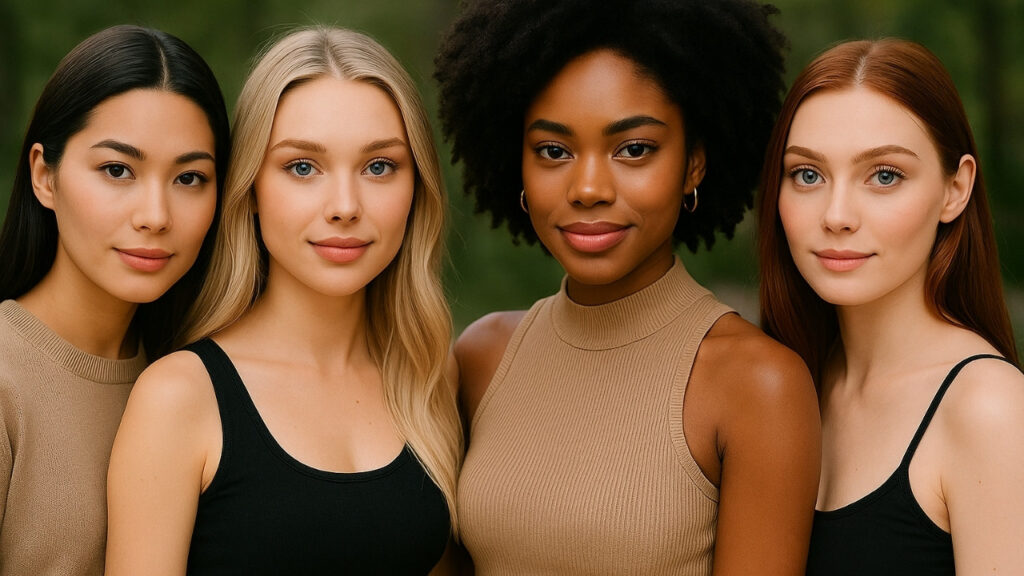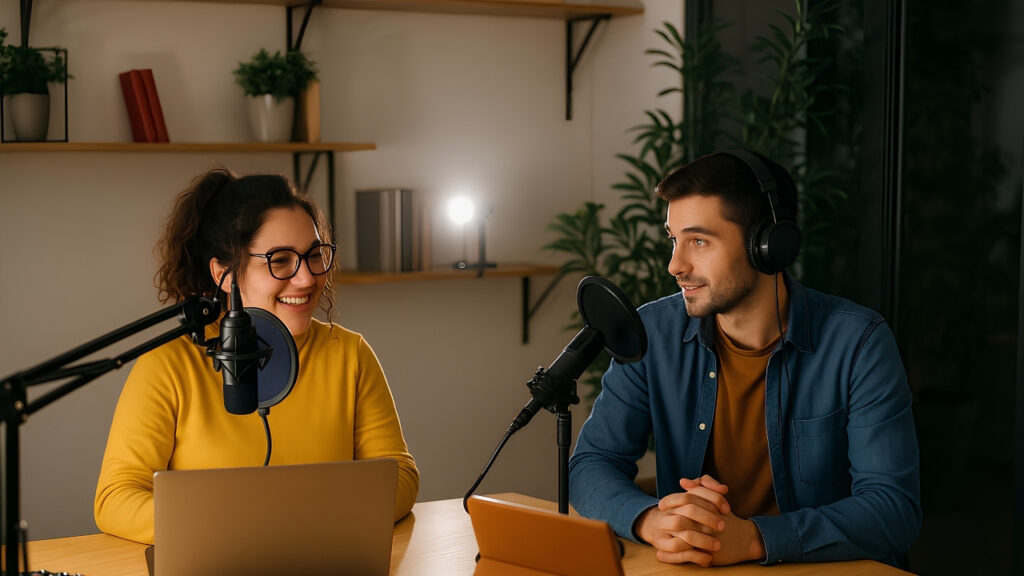You ever scroll through your feed and stop on somebody who just looks… too perfect?
Like not a single thing outta place — the skin, the lighting, the background, the way they move — it’s all way too clean.
You look twice, thinking, “Something’s off here.” Yeah, turns out half the time now, it is off. That’s not a person. That’s a bunch of pixels pretending to be one.
Welcome to 2025, where fake people got brand deals, fake smiles sell real shoes, and AI models are popping off like they’re celebrities.
Some of these “digital influencers” are pulling millions of followers, landing sponsorships, and doing collabs with actual human creators.
Kinda wild, right? The question everybody’s tossing around now is — are these things replacing real creators?
I’ll tell you straight — not yet. Maybe not ever the way folks think. But they’re definitely moving in fast, taking a slice of the pie while everyone’s still arguing if it’s real food or plastic.

The market’s getting crazy big
Let me start with the money, ‘cause that’s where you see what’s really going on. Last year, 2024, the whole virtual influencer industry was sitting around 6 billion dollars.
Yeah, 6 billion. That’s not startup money — that’s serious.
And now in 2025, people are saying it’s already cruising past 8 billion, and it might hit 11 billion before the year’s done. If that keeps up, they’re talking about forty-five billion by 2030.
Some folks even throwing around triple-digit numbers, like it could top a 100 billion in the next decade.
That’s wild growth. We’re talking almost 40% up every year. And while that’s happening, the regular influencer industry — the one with real people, faces, and late-night coffee-driven content — is still booming too.
That one’s sitting at about 32 billion dollars right now. So yeah, real creators still running the show, but these digital ones are starting to lurk around the edges, and the money’s listening.
Brands are seeing those numbers, doing that little corporate math in their head like, “Hold up, if I can get a fake person to post 24/7 and never argue about rates or contracts, why not?”
But then the brakes hit
See, what happened was, 2024 felt like the year everybody lost their minds over AI. Brands were tripping over themselves to hire avatars.
Then 2025 hit and reality showed up. Reports started saying that interest in virtual influencers dropped about 30% since last year. Thirty. That’s not small. That’s a lot of people backing off after the honeymoon phase.
Turns out, all those perfect digital faces weren’t moving products like folks thought. People liked the posts, sure.
The engagement numbers looked sexy — likes, comments, shares — but when it came to buying, conversions fell flat.
A lot of people were just watching ‘cause they were curious, like, “Yo, what even is this thing?” They’d double-tap, scroll, and move on. That’s not loyalty. That’s novelty.
And brands started noticing. They realized fake faces don’t build trust. Like, how you gonna sell me a protein shake when you don’t even got a real stomach?
Why brands fell for the hype in the first place
Can’t blame ‘em, though. Think about it. You’re a brand. You’ve dealt with real influencers — missed deadlines, attitude issues, someone tweeting something dumb and tanking your PR week. It’s messy.
Now imagine a “person” who does exactly what you say, never sleeps, never complains, and never ages. That’s gold for a marketing manager.
That’s the real reason they got hooked. It wasn’t creativity — it was control. You can tweak the lighting, the smile, the vibe, every single frame.
You want a version that speaks Spanish, one that sounds British, one that sells in Tokyo — done. No flights, no catering, no mood swings.
TikTok even made it easier this year. They got these new AI avatar tools that let brands just generate faces straight from text prompts. Like, you type the script, the thing talks it, looks alive, boom — ad ready. It’s scary simple.
So from that point of view, you can see why they thought, “Yeah, let’s ride this.” But perfect don’t mean powerful. It just means safe — and safe gets boring fast.
The real problem is trust, not tech
That’s where it falls apart. You can make a robot smile, but you can’t make it feel. And people online — they can smell fake like gasoline.
That’s why, when Digiday dropped numbers showing brand interest in AI influencers falling by a third this year, it wasn’t shocking. It’s that trust thing.
Over 90% of the brands that backed away said straight up — the audience don’t buy it. People just don’t connect with something that’s not real.
And it’s not even hate — it’s just emptiness. You can’t root for a character who never screws up. You can’t laugh with somebody who never messes their words up. That “too perfect” thing ends up being the turn-off.
Authenticity still runs this game. Always has. That’s why, even though virtual influencers look slick, it’s the humans who get the shares, the stitches, the comments that mean something.
The split happening right now
This year’s a weird one. On one hand, every brand’s throwing AI in their decks.
92% of them say they’re either already using it or thinking about it. That’s almost everyone. But on the other hand, 80% still say they’re keeping or increasing their human creator budgets.
So what’s that tell you? They’re not replacing people; they’re doubling up. The AI’s not the new face of marketing — it’s the new assistant. It’s doing the repetitive junk, the 3 AM posts, the translations, while the real people still carry the story.
The smarter brands are playing hybrid — humans for the soul, AI for the schedule. The dumb ones tried full robot and got cooked.
Real creators still run culture
Let’s talk about the human side for a second. The top creators right now? They ain’t losing sleep over AI influencers. They’re too busy filming, editing, talking to fans, keeping their communities tight. That’s the thing the machines don’t get — community.
AI can copy style. It can’t copy energy. It doesn’t feel the rhythm of a trend or the chaos of a meme before it explodes. It doesn’t know when a joke lands or when it crosses the line.
That instinct — that’s what drives culture. That’s what keeps real creators irreplaceable.
You can’t program intuition. Not yet, anyway.
The beauty and fashion trap
Now, you’d think beauty and fashion would be the perfect playground for these virtual folks. Perfect faces, flawless lighting — it fits.
And sure, big names like Prada, Dior, Balmain — they’ve all done collabs with digital people like Lil Miquela or Imma. It looks cool on paper.
But numbers don’t lie. In beauty, the total “earned media value” on Instagram dropped by almost 30% in early 2025 compared to last year. That’s big.
And part of it’s ‘cause the audience’s just not connecting the same. They can tell when it’s a simulation.
People want to see acne, bad hair days, emotion. That’s what makes products believable.
A pixel face selling moisturizer? That’s like a mannequin giving you dating advice — might look nice, but what do they know about real life?
The creator economy’s still expanding
Here’s the part folks forget: the whole creator economy’s still getting bigger every single year. The influencer marketing world’s worth about 30 billion this year — up from around twenty-one billion in 2023.
That’s about a 17% jump. So the pie’s getting bigger, and both sides — humans and virtuals — are just getting bigger slices.
What’s happening isn’t replacement, it’s expansion. AI didn’t take the money — it made new lanes.
And that’s where the smart ones win. The humans who use AI to multiply their work, translate their content, streamline their posts — they’re eating.
The ones who just sit there saying “AI’s stealing our jobs” — they’re the ones who’ll get left. Not because they’re less talented, but because they stopped moving.
Why this matters more than it looks
It’s easy to laugh at a fake person doing makeup tutorials. But think bigger.
What happens when those same AI avatars start pushing politics? Or fake news? Or emotional storytelling that’s so clean you can’t even tell it’s fake?
That’s coming. Fast. The realism tech’s getting better by the week. Voice, eyes, little micro-twitches — soon you won’t be able to spot what’s real unless someone tells you.
That’s where the real danger sits. If people already struggle trusting real influencers, imagine when they can’t even tell what’s human anymore.
That’s why regulations are creeping in now — governments pushing for labels that say “AI-generated” or “synthetic media.” Platforms too.
TikTok, Meta — they’re already starting to mark AI content. They know if this gets too blurry, audiences will check out completely.
How it actually plays out
So here’s how this game’s unfolding. You’re gonna see more virtual faces, not fewer. But they’ll live in different lanes.
You’ll have digital mascots doing the corporate stuff, evergreen ads, multilingual product explainers — that’s their territory.
Then you’ll have human creators running the chaos. They’ll do the storytelling, the trends, the heart-to-heart moments. The things that remind people there’s still blood behind the screen.
And that balance — that mix — that’s where the future sits.
This ain’t some takeover story. It’s a remix. The AI does the grind. The human brings the groove.
The bottom line — who’s really winning?
Right now, the scoreboard’s simple. Virtual influencer market? Around eight billion and rising.
Human creator economy? Over 30 billion and climbing. AI’s growth rate’s insane, like 40% a year, but humans still got triple the cash flow and all the trust.
That’s the real divide. AI’s got the scale. Humans got the soul.
It’s like fast food versus home cooking. The first one’s faster, cheaper, easier to replicate. The second one’s what people actually crave.
You can feed on fake for a while. But when you want something that sticks, you go back to real.
The final word
Everybody loves to say “AI’s taking over.” Nah. It’s taking space, yeah, but not over.
What’s happening right now is more like balance. The robots finally learning to do the grunt work while the humans still make it mean something.
So no, virtual influencers ain’t replacing real creators. They’re replacing repetition. The late-night edits, the endless posting, the localization, the filler content. Let the bots eat that.
But when it comes to storytelling, emotion, that gut-level connection — the part that makes someone stop scrolling and actually feel something — that still belongs to people.
You can render a smile, but you can’t fake a heartbeat.
So yeah, AI’s here. It’s loud, shiny, fast. But humans? We still got the soul that sells.
